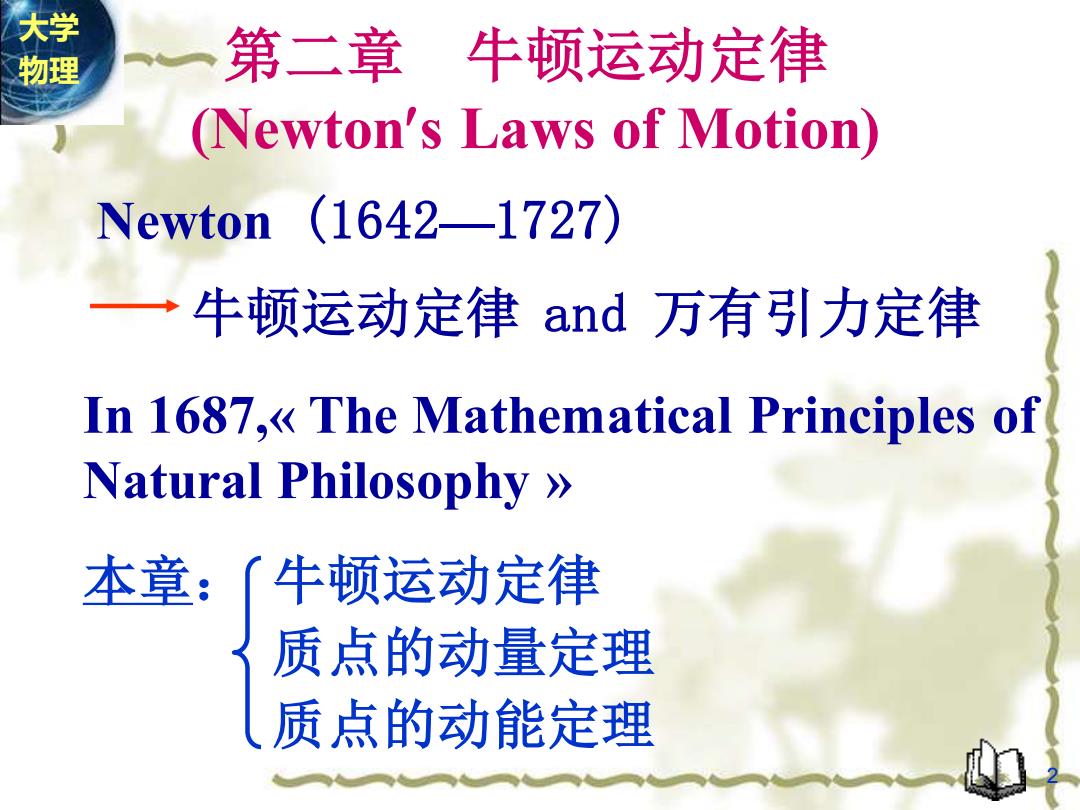
大学 物理 第二章 牛顿运动定律 (Newton's Laws of Motion) Newton(1642-1727) → 牛顿运动定律and万有引力定律 In 1687,<The Mathematical Principles of Natural Philosophy》 本章:〔牛顿运动定律 质点的动量定理 质点的动能定理
第二章 牛顿运动定律 (Newtons Laws of Motion) Newton (1642—1727) 牛顿运动定律 and 万有引力定律 本章: 牛顿运动定律 质点的动量定理 质点的动能定理 In 1687,« The Mathematical Principles of Natural Philosophy » 2 大学 物理
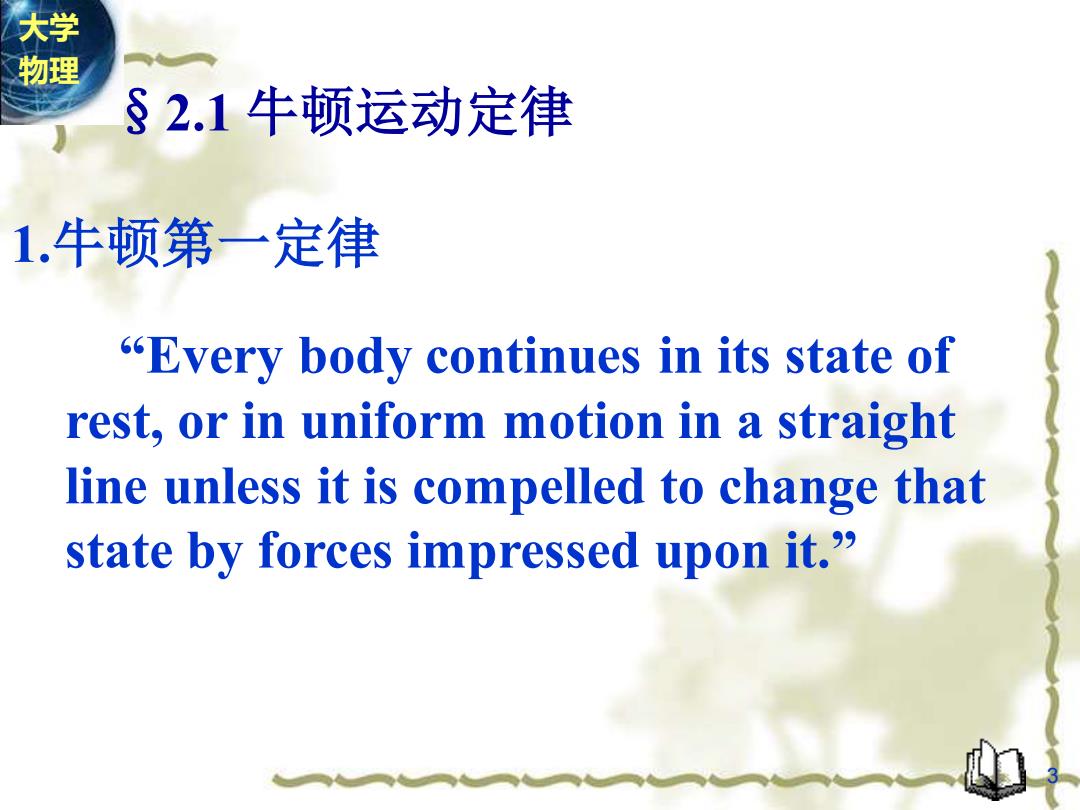
大学 物理 §2.1牛顿运动定律 1.牛顿第一定律 "Every body continues in its state of rest,or in uniform motion in a straight line unless it is compelled to change that state by forces impressed upon it
§2.1 牛顿运动定律 1.牛顿第一定律 “Every body continues in its state of rest, or in uniform motion in a straight line unless it is compelled to change that state by forces impressed upon it.” 3 大学 物理
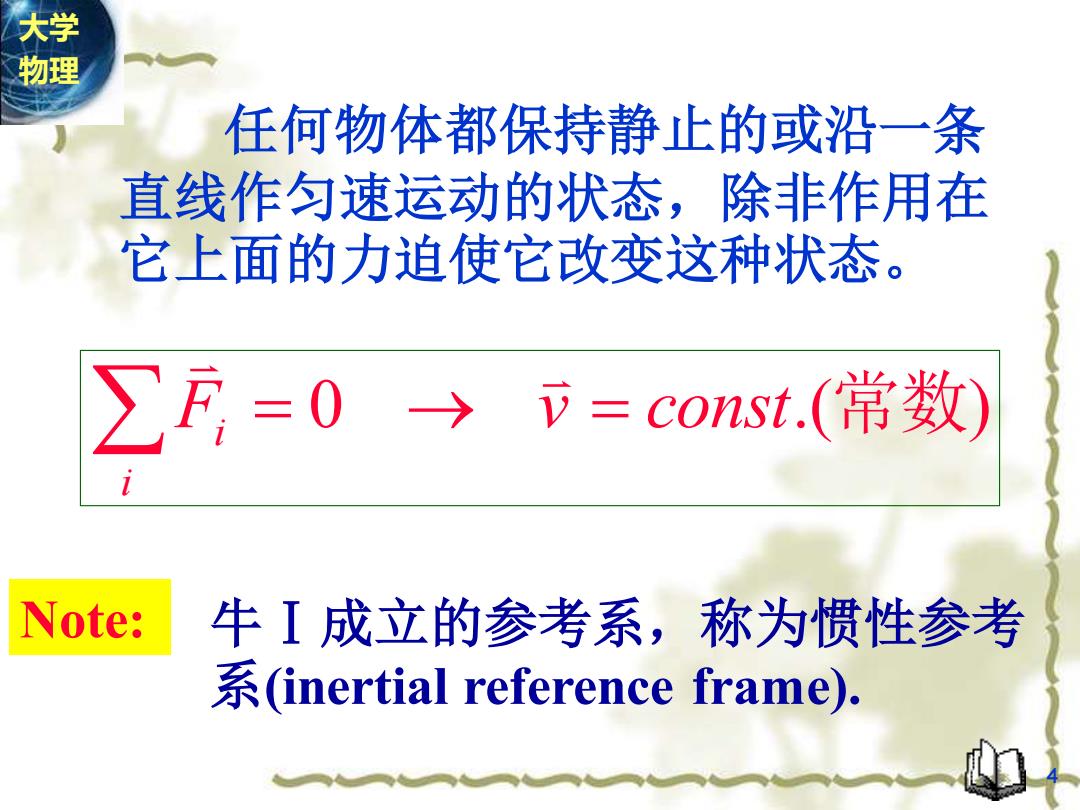
大学 物理 任何物体都保持静止的或沿一条 直线作匀速运动的状态,除非作用在 它上面的力迫使它改变这种状态。 ∑E=0 >立=const.(常数) Note: 牛I成立的参考系,称为惯性参考 (inertial reference frame)
任何物体都保持静止的或沿一条 直线作匀速运动的状态,除非作用在 它上面的力迫使它改变这种状态。 F 0 v const.(常数) i i = → = 牛Ⅰ成立的参考系,称为惯性参考 系(inertial reference frame). Note: 4 大学 物理
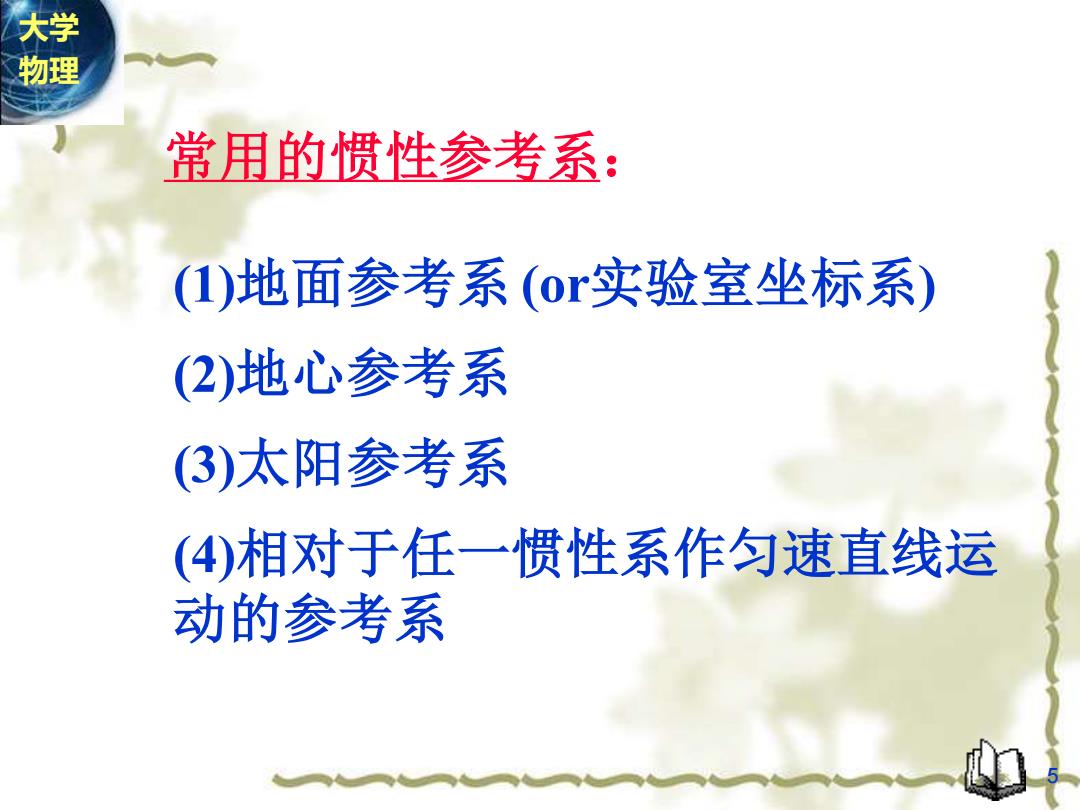
大学 物理 常用的惯性参考系: 1)地面参考系(o实验室坐标系) (2)地心参考系 (3)太阳参考系 (4)相对于任一惯性系作匀速直线运 动的参考系
常用的惯性参考系: (1)地面参考系 (or实验室坐标系) (2)地心参考系 (3)太阳参考系 (4)相对于任一惯性系作匀速直线运 动的参考系 5 大学 物理
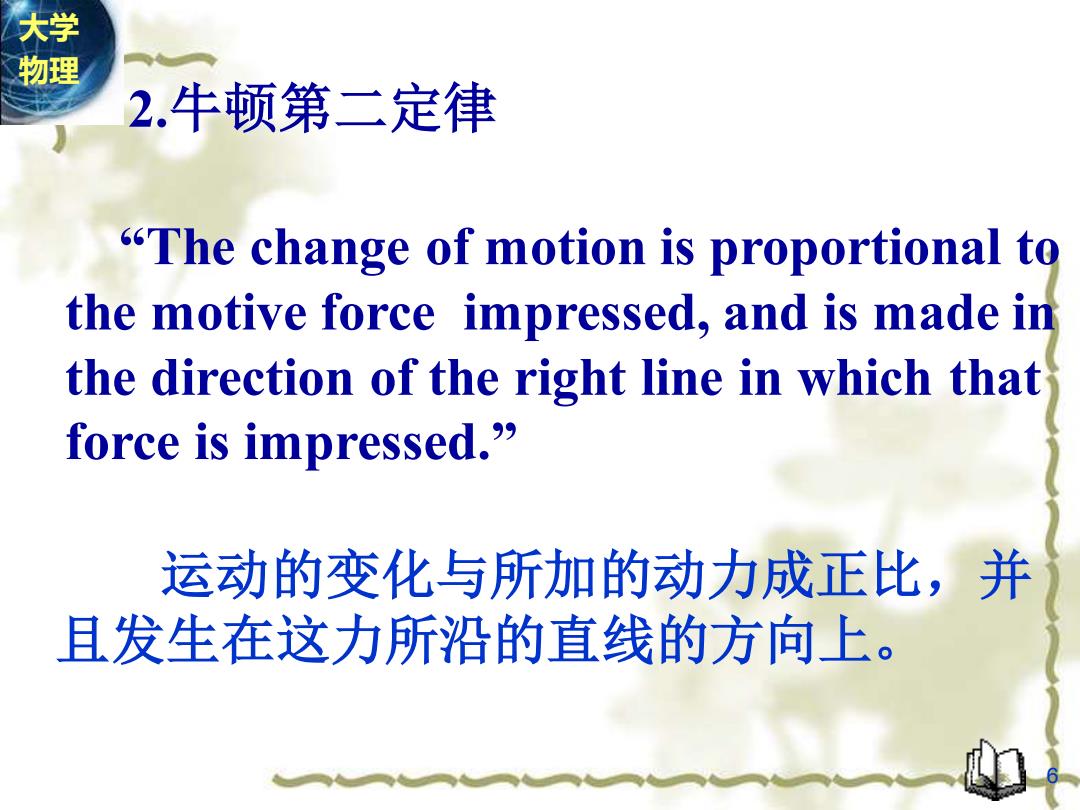
大学 物理 2.牛顿第二定律 "The change of motion is proportional to the motive force impressed,and is made in the direction of the right line in which that force is impressed.” 运动的变化与所加的动力成正比,并 且发生在这力所沿的直线的方向上
2.牛顿第二定律 “The change of motion is proportional to the motive force impressed, and is made in the direction of the right line in which that force is impressed.” 运动的变化与所加的动力成正比,并 且发生在这力所沿的直线的方向上。 6 大学 物理
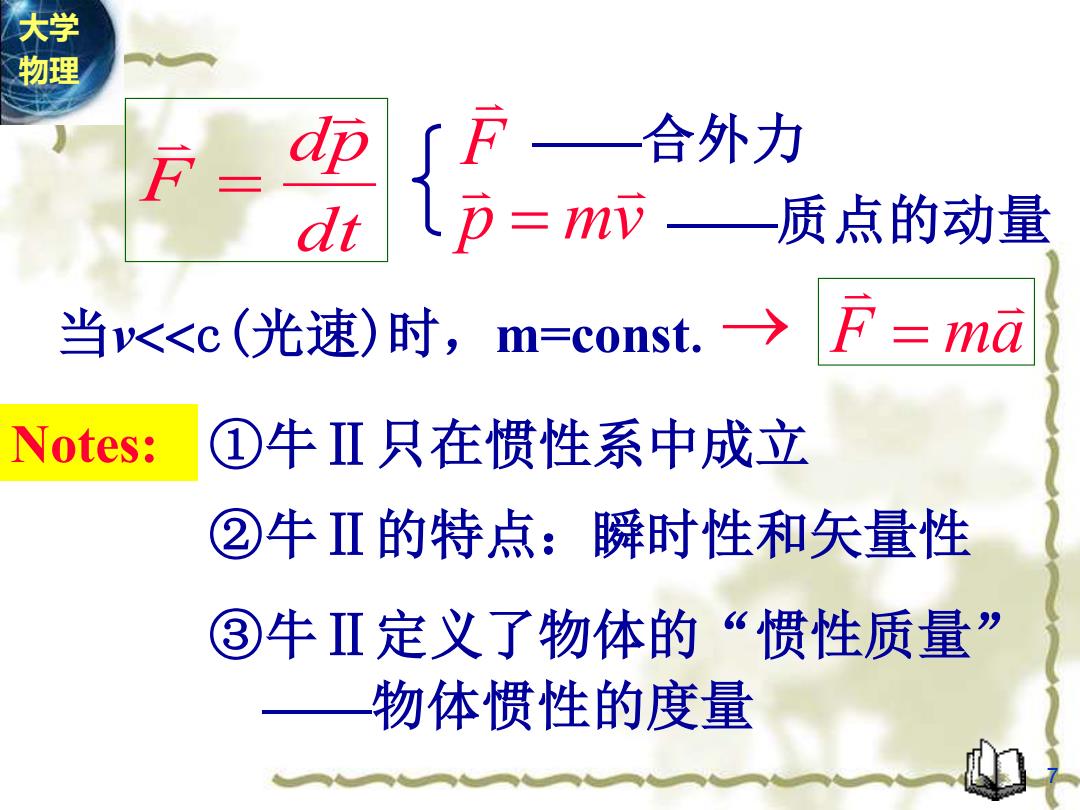
大学 物理 F dp ∫F 合外力 dt (p=m币一质点的动量 当v<<c(光速)时,m=const.→ F=ma Notes: ①牛Ⅱ只在惯性系中成立 ②牛Ⅱ的特点:瞬时性和矢量性 ③牛Ⅱ定义了物体的“惯性质量” 物体惯性的度量
当vc(光速)时,m=const. F ma → = ③牛Ⅱ定义了物体的“惯性质量” ——物体惯性的度量 ①牛Ⅱ只在惯性系中成立 ②牛Ⅱ的特点:瞬时性和矢量性 Notes: dt dp F = p mv = ——质点的动量 F ——合外力 7 大学 物理
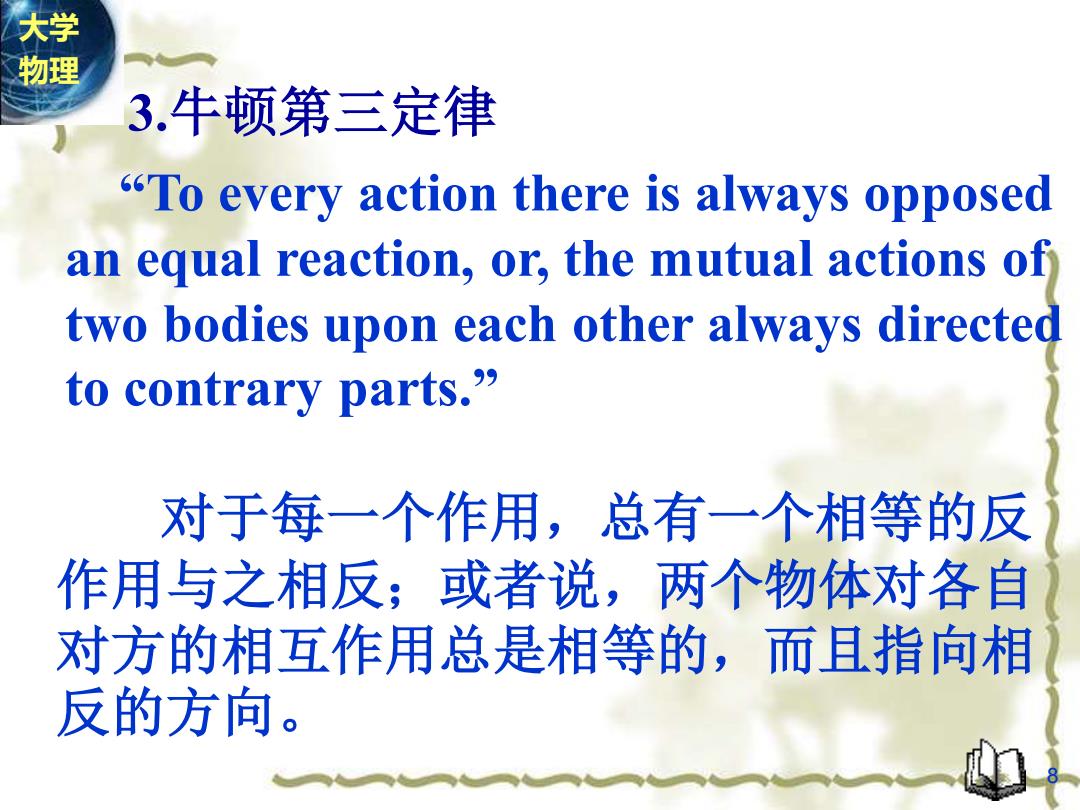
大学 物理 3.牛顿第三定律 "To every action there is always opposed an equal reaction,or,the mutual actions of two bodies upon each other always directed to contrary parts.” 对于每一个作用,总有一个相等的反 作用与之相反;或者说,两个物体对各自 对方的相互作用总是相等的,而且指向相 反的方向
3.牛顿第三定律 “To every action there is always opposed an equal reaction, or, the mutual actions of two bodies upon each other always directed to contrary parts.” 对于每一个作用,总有一个相等的反 作用与之相反;或者说,两个物体对各自 对方的相互作用总是相等的,而且指向相 反的方向。 8 大学 物理
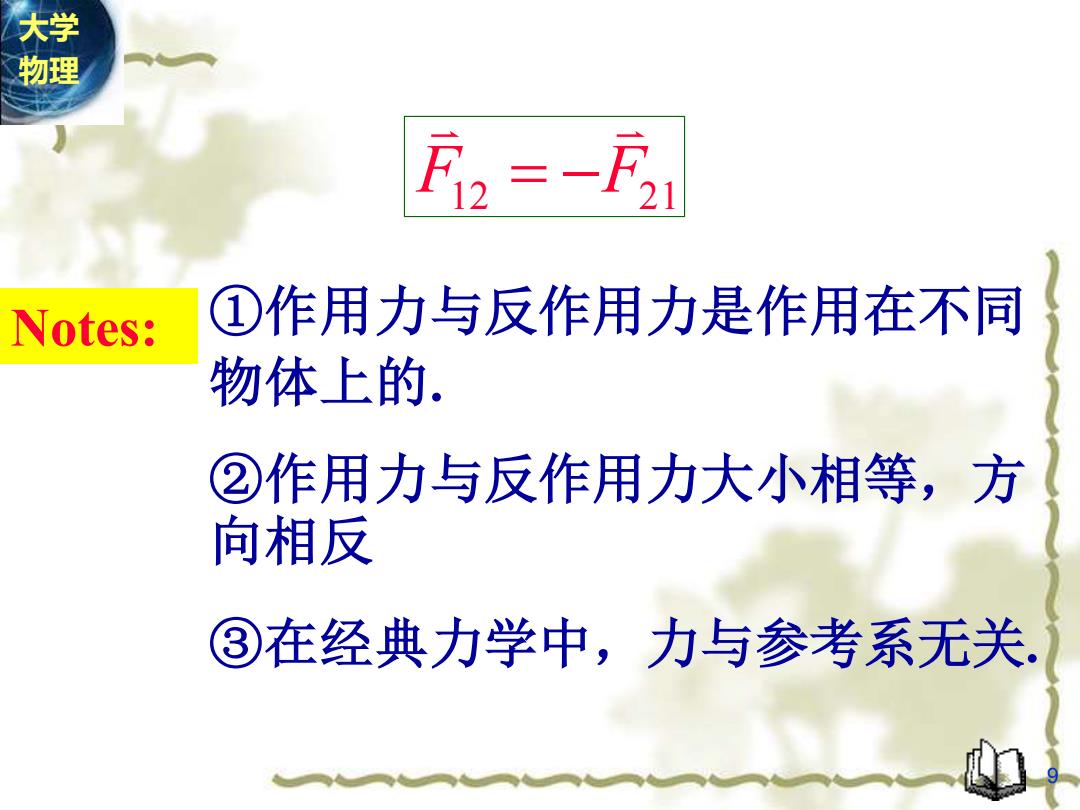
大学 物理 F2=-E Notes: ①作用力与反作用力是作用在不同 物体上的 ②作用力与反作用力大小相等,方 向相反 ③在经典力学中,力与参考系无关
①作用力与反作用力是作用在不同 物体上的. F12 F21 = − Notes: ③在经典力学中,力与参考系无关. ②作用力与反作用力大小相等,方 向相反 9 大学 物理
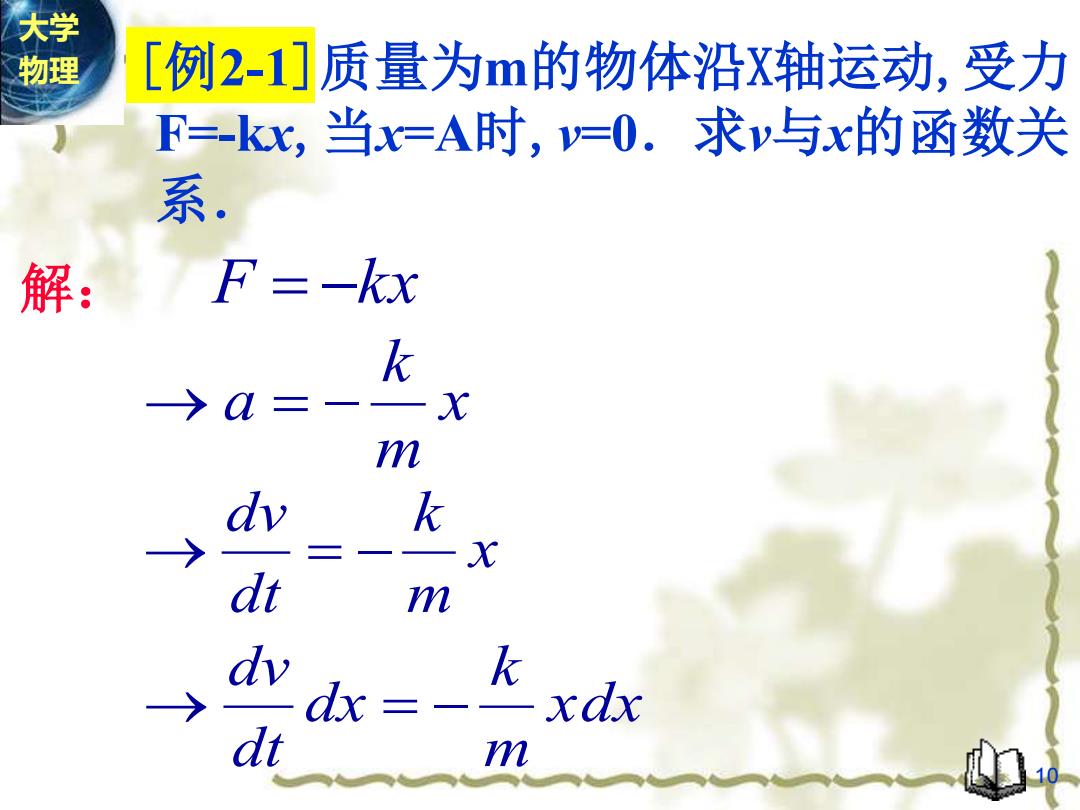
大学 物理 [例2-1]质量为m的物体沿X轴运动,受力 F=-k,当x=A时,y=0.求v与x的函数关 系 解:F=-kx k >a X m dv k > dt m dv k dx xdx dt m
[例2-1]质量为m的物体沿X轴运动,受力 F=-kx,当x=A时,v=0.求v与x的函数关 系. 解: F = −kx x m k → a = − x m k dt dv → = − xdx m k dx dt dv → = − 10 大学 物理

大学 物理 今h=-点a =(4-x2) m 「思考1何种运动? (简谐振动)
( ) 2 2 2 A x m k → v = − (简谐振动) 何种运动? → = − x A v xdx m k vdv 0 [思考] 11 大学 物理